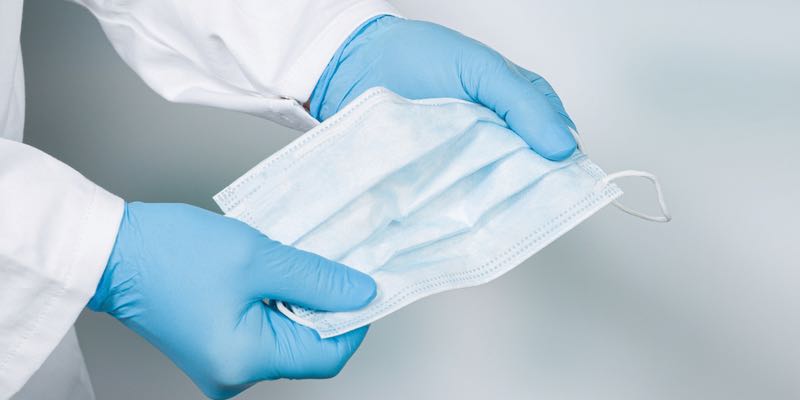From airflow, ventilation and architecture, to sanitisation methods and personnel behaviours, multiple factors can impact the controlled environment of a cleanroom.
One of the most complex aspects to manage is microbial activity. Regardless of the many practices and processes incorporated into cleanroom operations, the resilient nature of microorganisms means they can be easily spread from one surface to another by touch or through the air.
Where microorganisms are present, these can prove challenging in terms of survival and ability to be removed. Many organisms found on human skin can adapt to extremely low nutrient content and can persist on dry surfaces for a long time. Some bacteria have an incredible ability to survive and flourish in environments that are intolerable to other microorganisms. Within hygiene-critical settings, microbial control becomes crucial in order to prevent issues that can compromise product efficacy and safety or regulatory compliance.
Copper is a widely established active ingredient in antimicrobial technologies
Cleanroom surface design presents an opportunity to carefully control contamination for a range of microorganisms, including bacteria, viruses and fungi. The incorporation of these materials onto surfaces, as a method to prevent or reduce microbial activity, is increasingly coming to the foreground.
Already well-established within food packaging and some healthcare environments, antimicrobial technology can be applied in two ways - incorporated directly within a substrate, whether that be glass, polymer, metal, paper or fabric, or as a surface coating in the form of paints, spraying, padding or dipping, where the antimicrobial is fixed on or within a thin polymer film providing a biostatic action.
Surface properties
When designing and constructing a cleanroom, there are numerous functional prerequisites that must be achieved; surfaces should have good chemical, mechanical and abrasion resistance so as not to react to or absorb materials or products being processed.
In addition, surfaces and the cleanroom walls and ceilings should be easily sanitised, smooth, and contain low electrostatic properties to prevent microbial contaminants adhering to them. Any antimicrobial material incorporated or applied to surfaces must, therefore, support these fundamental requirements.

ACTIn is exploring the antimicrobial effects of its nano-copper particles in fabrics for PPE
Copper is a widely established active ingredient in antimicrobial technologies due to its efficacious properties and chemical stability which allows it to be incorporated into a wide range of substrates. The oldest recorded medical use of copper is mentioned in the Smith Papyrus, one of the oldest books known. The Egyptian medical text, written between 2600 and 2200 BC, describes the application of copper to sterilise chest wounds and drinking water. It continued to be used as an antimicrobial agent until the advent of commercially available antibiotics in the 1930s. However, the increase in antibiotic resistance and ultimately, the spread of antibiotic-resistant bacteria, has raised the need for different approaches to keeping pathogenic microorganisms at bay. One such approach, is the use of copper surfaces in hygiene-sensitive areas.
Research into the antimicrobial mechanism of copper has shown that copper ions are released when microbes land on a surface (e.g. from touching, coughing, sneezing). These copper ions break down the cell membrane of the bacteria or coating of a virus and penetrate the organism. The copper ions can also bind to essential proteins in the organism (such as enzymes), disrupting its function and ultimately killing the microbe.
Regular copper particles can cause uneven finish, a perfect surface for microorganisms to adhere to
Importantly, copper ions have been shown to destroy DNA and other genetic material inside the microbe; a particularly effective property as it prevents the microbe from mutating, developing resistance and coming back in another more-destructive form. Copper has been shown to kill 99.9% of most pathogens within two hours of contact and, in some cases, demonstrated better properties than other expensive metals with antimicrobial activity, such as silver and gold.
While the antimicrobial properties of copper surfaces are now firmly established, nano-copper offers enhanced benefits. Due to their size, the physical properties of nanomaterials enable functionality that is not achievable with other micron-scale additives. Additionally, nanomaterials provide a superior platform for the modulation of coatings and substrate properties. The larger surface-area-to-volume ratio in nanoparticles requires a smaller mass or weight of active material to achieve the same antimicrobial activity compared to larger copper particles. Incorporating antimicrobial technology becomes more cost-effective for both manufacturer and end-user - an issue which has hindered take-up on a large scale to date.
The smaller the better
At the nano-scale, copper particles interact easily with bacterial membranes and the integrity of the bacterial cell membranes changes noticeably causing bacterial cell death.
Where surfaces have to be smooth (e.g. tables, walls or display screens) - such as in the cleanroom setting - nano-copper incorporated into a coating is an ideal solution; regular copper particles can result in an uneven, rough finish, providing a perfect surface for microorganisms to adhere to. Additionally, nano-copper has no impact on standard surface functionalities such as abrasion resistance, durability and liquid repellence. In fact, they can be optimised even further by creating different, more complex nanostructures that yield additional benefits. Furthermore, by mixing nanomaterials together, multiple benefits can be accomplished in the same coating.
Regardless of the many practices and processes, the resilient nature of microorganisms means they can be easily spread
When incorporated directly into a substrate, nano-copper can deliver similar antimicrobial benefits to many coating applications. Promethean Particles, based in Nottingham, UK, is home to the world's largest multi-material nanomaterial plant of its kind. It manufactures nano-copper as a liquid dispersion using a unique production process that enables the delivery of high-quality inorganic nanomaterials at scale, reducing cost and process complexities. By manufacturing particles in liquid dispersions, rather than as powders, Promethean avoids the tendency for nanomaterials to agglomerate together. When this happens, the benefits of nanotechnology can be lost.
The company has collaborated with textile companies and leading research facilities as part of an Innovate UK-funded project, ACTIn, to explore the antimicrobial effects of its nano-copper particles when incorporated into fabrics for Personal Protective Equipment (PPE). The requirements for disposal and use of gowns and garments differ according to cleanroom classification and application. Whilst some dispose of PPE after each exit and entry others, with the highest particle thresholds, may only change garments a few times per week.

Selina Ambrose, Technical Manager at Promethean Particles
Funded by the Newton Fund, Mexican and UK organisations have successfully developed antimicrobial textiles by embedding nano-copper into polymer fibres via a melt extrusion process. By embedding the copper nanoparticles within the fibres, the antimicrobial effect lasts longer than if the particles were surface-coated on the textile, where the functionality would diminish with each wash.
In conjunction with the Mexican research institute, CIQA, and textile trade association, NWTexNet, fibres embedded with copper nanoparticles manufactured by scientists from Promethean, have been sent to independent laboratories in the US and UK for anti-viral testing. If proven effective, it could open the door to the manufacture and supply of nonwoven fabrics and PPE, such as garments, face masks, and hats, which is resistant to viruses and bacteria.
Antimicrobial nanotechnology within the cleanroom environment remains a relatively novel concept. When adopted alongside other microbial control strategies, it can clearly offer value in any setting where hygiene is mission critical. Promethean continues to engage in collaborations where innovative manufacturing processes can enhance the cost-effectiveness of antimicrobial and anti-viral applications.
